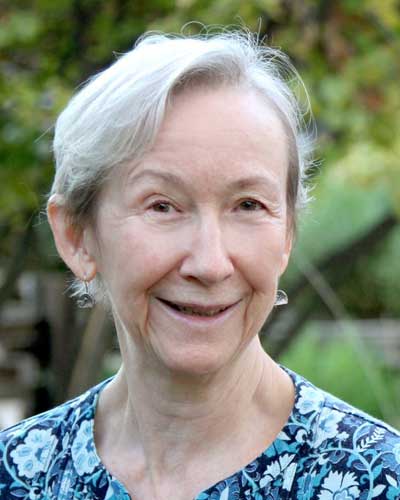|
 |
| Marcia Ehinger, MD, a native Californian, is a retired pediatrician and genetic specialist. She is the California Writers Club Sacramento Branch newsletter content editor. |
| |
|
| |
|
My daughter and granddaughter live in beautiful and balmy San Diego, California. In addition to its seaside treasures, the city has a cultural side with man-made wonders. Flying into San Diego, you can see the early 1900s structures and greenery of Balboa Park and the zoo.
A former city dump was transformed by the wealth and vision of John Spreckels for the Panama-California Exposition of 1915. The event was created to celebrate completion of the Panama Canal, while showcasing San Diego and world-wide culture, and nearly cancelled by the beginning of World War I. On New Year's Eve, thousands gathered at the pavilion of the all-weather organ, commissioned by Spreckels and still playing regular concerts today, for the opening musical performance and fireworks display.
Later, two doctors heard the roars of caged lions which remained on site and requested Spreckels' help in creating a city zoo. Soon, Spreckels' steamship line employees were dismayed to find themselves sharing space with a menagerie of creatures from all over the Pacific Rim. One captain kept two frightened young koalas safe and warm under his coat on the voyage to California.
John Diedrich Spreckels (1853 – 1926), was the first child born to industrious German immigrants Claus and Anna Spreckels. His father, the "Sugar King," had modernized the refining of sugar in post-Gold Rush San Francisco.
After college, the "Sugar Prince" was sent to New York to learn new methods of sugar processing. He met and married his wife, Lillian, in New Jersey. Claus sent the young couple to Hawaii, so that John could clerk for a shipping company, and learn how sugar cane was grown.
John bought the steamship company and expanded beyond Hawaii to San Francisco trips to shipping goods throughout the Pacific. Back in California, he added a racing yacht and six enormous tugboats to his fleet. After a victorious yacht race in 1887, John stopped in San Diego to restock supplies. He was impressed with the natural harbor and drawn into the area's real estate boom, including development of the Coronado area.
Meanwhile, Claus Spreckels' attempt to expand his sugar empire toward the east started a war with the New York "Sugar Trust" and began a family rift which worsened over time.
John was managing the sugar business in San Francisco when successive recessions hit southern California. To protect his investments, John poured money into modernizing San Diego. He transformed the horse-drawn transport system into an electric street railway, found a reliable city water source, took over the ferry system, and induced the Santa Fe Railroad to stay, while building a San Diego to Arizona route.
|

In 1903, Claus suffered two strokes, and John returned to managing his father's interests. He was having his own health issues when his partner, brother Adolph, suffered a stroke and left for Germany. The steamship company incurred losses due to a drought in Australia. John was diagnosed with a "digestive condition" and declined from a robust 175 pounds to a skeletal 100 pounds. In early 1906, he couldn't eat and was placed on intravenous fluids, awaiting his death.
A mighty earthquake shook San Francisco in April. The Spreckels families escaped their collapsing homes. Rudolph and his wife, eight months pregnant, were spotted having morning tea, complete with silver service wielded by their servants, out on the sidewalk.
John was carried aboard the Breakwater, a ship he had acquired to haul passengers and coal from Oregon. Before departing for San Diego, John was asked about the future and replied, "I'm a crackerjack mechanic, so I could get a job as a chauffeur." (At the time, chauffeurs had to maintain, repair, and clean the cars they drove.)
John's boat returned with Red Cross supplies for earthquake victims. His family stayed at the luxurious Hotel del Coronado and offered their economy vacation option nearby to evacuees from San Francisco. In San Diego, a haven of happy vacation memories away from his feuding family, John experienced a miraculous recovery.
After John's parents died in San Francisco, cutting him out of their wills, John focused on projects in San Diego. Before women were allowed to vote or handle motor vehicles, he bought automobiles for his daughters and taught them to drive. Despite his conservative stance in politics, he supported the suffrage movement and helped women win the vote in California in 1911.
The early 1920s were hard on John. His son Jack, beloved wife, and brother Adolph died. Bear, his favorite dog, was poisoned by a "maniac." John became bedridden with increasingly severe back pain. From his rooftop sunroom, he could see two things he loved: the Hotel del Coronado and his yacht.
The wealthy man who modernized San Diego, employed thousands, and paid ten percent of all property taxes in the County, died in 1926. As people quipped, it was in his name, John Diedrich Spreckels. John "Died-rich."
~ Marcia Ehinger
|
